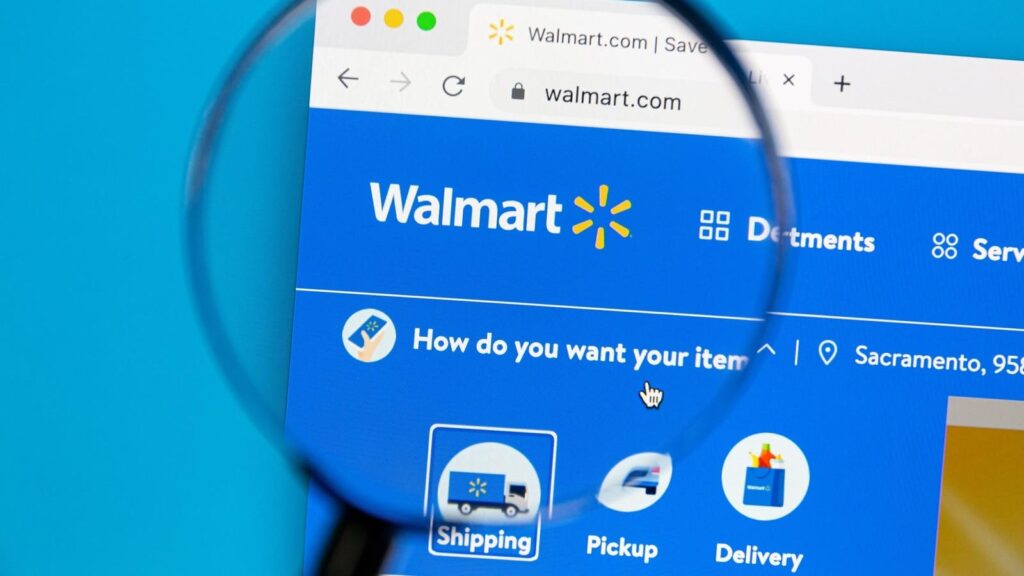How Walmart Business is Transforming B2B Shopping with AI: Deep Insights into the Future of Retail
In the rapidly evolving retail world, few companies are better poised to harness the power of artificial intelligence (AI) than Walmart. While most consumers are familiar with Walmart's B2C offerings, the retail giant has been quietly revolutionizing the B2B space through its Walmart Business division.
I recently had the opportunity to speak with Ashley Hubka, Senior Vice President and General Manager at Walmart, to explore how the company is leveraging AI to create a more efficient, personalized and streamlined B2B shopping experience.
Walmart Business: Meeting the unique needs of your organization
Launched several years ago, Walmart Business was born out of the recognition that millions of businesses and nonprofits already relied on Walmart stores and websites to meet their procurement needs, but these organizations had unique challenges and required a customized approach.
“We heard some key themes from organizations of all sizes and in all industries,” Hubka explains. “They wanted to save money and simplify their business purchasing. They wanted to maintain and manage their inventory. This management piece is critical, and they wanted to create efficiencies and opportunities.”
To address these needs, Walmart Business has created a purpose-built site, app and omnichannel experience focused on organizational buyers. The platform offers a wide range of products, from office supplies to break room essentials, all at Walmart's everyday low prices. But what really sets Walmart Business apart is its strategic use of AI to power its B2B shopping experience.
AI-Powered Personalization: Tailoring B2B Experiences
One of the most important ways Walmart Business is using AI is to deliver personalized, customized experiences for customers. Hubka highlighted the company's “people-led, technology-driven” approach, promising to make sure people use technology, rather than technology serving people.
“We look at customer behavior on the site and tailor and personalize their experience,” says Hubka, “so it's relevant to them and saves them money and effort.”
This personalization applies to both new and returning customers: first-time visitors may be prompted by AI-powered prompts to create an account or connect with a sales representative, while returning visitors can be served by the system with customized product recommendations based on their past purchase and browsing history.
Bridging the gap between discovery and purchase
In the B2B space, the process from product discovery to purchase can be longer and more complicated than in B2C transactions, and Walmart Business is using AI to bridge this gap, particularly through search engine optimization (SEO).
“We use AI to generate on-page keywords and information that helps search engines and ultimately helps business buyers,” Hubka explains. This AI-driven approach not only improves Walmart Business’ visibility in search results, but also helps business customers find the products they need faster.
AI in supply chain: increasing efficiency and control
Behind the scenes, Walmart Business is benefiting from the company's broader AI and machine learning efforts, particularly in supply chain management. These AI-powered systems optimize inventory forecasting, planning and logistics, ensuring business customers have access to the products they need, when they need them.
“All of the back-end AI/ML advanced engines that optimize what we do are geared towards empowering our customers to choose what they want to know, what they want to achieve, and have confidence in the timelines they can see on our site,” Hubka noted.
The human touch in an AI-driven world
While AI plays a key role in Walmart Business' operations, the company is committed to a “human-led, technology-led” philosophy, and this approach also applies to how Walmart is preparing its workforce for an AI-driven future.
“We want people to [AI] “Once you try it, it becomes a little less scary,” said Havka, giving the example of how AI tools can help employees summarize large documents and create first drafts faster, freeing up time for more strategic and creative work.
The company is also investing in automation across its supply chain, creating new opportunities for employees to upskill and take on more technologically advanced roles. “Right now, 15 percent of my job is manual. It's more fun, more interesting, and it's allowed me to continue my career at Walmart for a long time in a new and different role,” Hubka explained.
Looking ahead: The future of AI in B2B retail
Looking to the future, Hubka sees AI playing an increasingly important role in B2B retail: From more sophisticated personalization to optimized inventory management aligned with B2B demand, the possibilities are endless.
But Walmart remains committed to using AI responsibly: The company has developed the Walmart Responsible AI Pledge, which outlines six commitments to ensure the ethical and responsible use of AI and other technologies.
Hubka put it succinctly: “We realize there are ways to create better customer experiences, better careers, and stronger businesses, and there are clear overlaps and ways we can achieve all three at the same time.”
Lessons for the B2B world
For other organizations looking to integrate AI into their B2B operations, Hubka has this advice: “Remember to put people first. Always keep that in mind as you make choices to ensure technology serves people. Put people at the top of the equation, not take them out of the equation.”
As Walmart Business shows, the future of B2B retail depends on striking the right balance between cutting-edge technology and the human touch. By leveraging AI to drive efficiency, personalization, and control while never losing sight of the people behind the organizations they serve, Walmart is setting a new standard for B2B commerce in the digital age.

